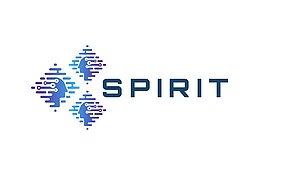
SPIRIT
SPIRIT: Scalable Platform for Innovations on Real-time Immersive Telepresence
Duration: October 2022 - September 2025
SPIRIT is co-funded by the European Union’s Horizon 2020 Research and Innovation Programme.
Challenges and objectives
Telepresence can be deemed as the next generation of communication applications that will substantially enrich immersive experiences in both human-to-human and human-to-machine interactions with blurred boundaries between the physical and the virtual world. It is expected that such systems will have a game-changing impact on how people will communicate and collaborate with each other in different sectors, including education, training, entertainment, retail, healthcare, manufacturing and many more. Further advancement of telepresence-based services will substantially contribute to the enhancement of societal resilience against environmental disruptions, to industry productivity, as well as to energy efficiency, thanks to the change of people’s living/working patterns.
SPIRIT brings together recognised European players that have been active for several years in industrial exploration and innovation projects, in innovative networking testbeds, in research, and in standardisation committees on immersive telepresence and collaboration. The project partners have available technologies, components, and platforms on immersive telepresence that are to be integrated, enhanced and developed further by various innovation activities in the project such as to achieve a collaborative telepresence system at the requested technology readiness level and, further, to be made available to third parties for additional research and development efforts and innovations. The ambition is to bring real-time immersive experiences to practice by deploying on top of today’s networks.
Contribution by Fraunhofer HHI
HHI will participate with two groups, the Multimedia and Communications group as well as the Computer Vision & Graphics group and will contribute an application platform with an edge cloud based split rendering application, animation and low-latency streaming capabilities for mixed reality use cases. HHI will also contribute to the generation of animatable human avatar representations, definition and derivation of context-based animation parameters as well as development of context-based neural animation and neural rendering approaches.
Project consortium
- Deutsche Telekom AG – T-Labs (DTAG)
- Digital for Planet
- Ericson GmbH
- Fraunhofer Heinrich-Hertz-Institut (HHI)
- Imec
- University of Klagenfurt
- University of Surrey